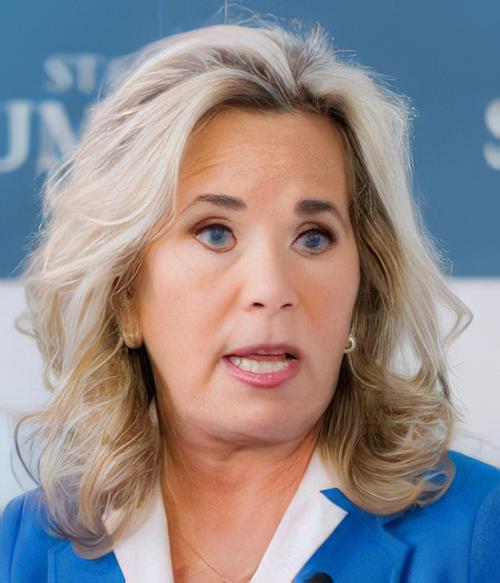Patient Rights Group Says Too Many Hospitals Are Not Complying with CMS Price Transparency Rules
Only about a third of the hospitals surveyed are in full compliance with giving public access to prices, the watchdog group contends, but the AHA disputes its methodology
It’s been almost four years since the Centers for Medicare and Medicaid Services (CMS) enacted its Hospital Price Transparency rule which requires hospitals—including their medical laboratories—to make their prices available and easily accessible to the public. But according to a 2024 report from PatientRightsAdvocate.org (PRA), just 34.5% of reviewed hospitals are fully compliant with the transparency rule. That’s a slight decrease from the 36% compliance rate the PRA listed in its 2023 report, the watchdog group stated in a blog post.
Released on Feb. 29, this was the group’s sixth semi-annual hospital price transparency report since the CMS rule took effect in 2021.
The rule “requires hospitals to post all prices online, easily accessible and searchable, in the form of (i) a single machine-readable standard charges file for all items, services, and drugs by all payers and all plans, the de-identified minimum and maximum negotiated rates, and all discounted cash prices, as well as (ii) prices for the 300 most common shoppable services either as a consumer-friendly standard charges display listing actual prices or, alternatively, as a price estimator tool,” the report states.
The required viewable prices are to be for, among others, medical imaging, clinical laboratory testing, and outpatient procedures such as a colonoscopies, etc.
“With full transparency, consumers can benefit from competition to make informed decisions, protect from overcharges, billing errors, and fraud, and lower their costs,” the report states. “Employer and union plans can use pricing and claims data to improve their plan designs and direct members to lower cost, high-quality facilities. However, continued noncompliance impedes this ability.”
At any time, the US Department of Justice (DOJ) could decide to file charges against a hospital or a clinical laboratory for not posting their prices on their websites in compliance with the federal rule. Such an action by DOJ officials would be to specifically put the entire industry on notice that there will be consequences for non-compliance.
The PRA’s report provides hospitals and clinical laboratories with a reminder that consumer watchdogs are also monitoring compliance.

“Our comprehensive study of 2,000 hospitals indicates nearly two-thirds (65.5%) of hospitals reviewed continue failing to fully comply with the rule, yet the Centers for Medicare and Medicaid Services (CMS) has only fined fourteen hospitals for noncompliance out of the thousands found to not be meeting all of the rule’s requirements. When hospitals don’t post their prices, they can charge whatever they want,” wrote PRA Founder and Chairman Cynthia Fisher (above) in a letter to President Biden. Hospital medical laboratories are also required to post their prices for tests. (Photo copyright: PatientRightsAdvocate.org.)
Increasing Penalties for Non-compliance
In a March 18 Health Affairs blog post on price transparency, two healthcare policy experts—David Muhlestein, PhD, JD, Chief Research Officer at Leavitt Partners, Washington, DC, and Adjunct Assistant Professor of The Dartmouth Institute (TDI) at the Geisel School of Medicine at Dartmouth College; and Yuvraj Pathak, PhD, Associate Director at West Health—argued that CMS should increase penalties for non-compliance, so the dollar amounts are greater than the cost of compliance.
To compile their report, PRA analysts examined the websites of 2,000 US hospitals between September 3, 2023, and January 13, 2023, and found that 1,311, or 65.5%, were not in full compliance, mostly due to “missing or significantly incomplete pricing data,” the report states.
More than 6,000 licensed hospitals operate in the US, the report notes. The group said it focused on hospitals owned by the largest US health systems.
Among the notable findings:
- The 2023 report found that 98% of Kaiser Permanente’s 42 hospitals were in full compliance with the rule, but in the 2024 study, none were compliant because the hospitals began posting multiple files instead of a single file.
- None of the hospitals owned by Avera Health, Baylor Scott and White Health, HCA Healthcare, Mercy, Providence, Tenet Healthcare, or UPMC were fully compliant.
- In total, 103 hospitals rated as noncompliant in the previous report were found to be compliant in the new analysis. Conversely, 135 hospitals previously rated as compliant were listed as noncompliant in the 2024 report.
The report lauded three hospitals for posting “exemplary files” that were “easily accessible, downloadable, machine-readable, and including all negotiated rates by payer and plan.” Those were Cape Cod Hospital in Hyannis, Mass.; Christus Santa Rosa Medical Center in San Antonio; and UW Health University Hospital in Madison, Wis.
In its discussion of the findings, PRA called on CMS to step up enforcement of the pricing transparency rule. The group also wants the government to close what it describes as the “estimator tool loophole,” which allows hospitals to list non-binding price estimates and price ranges instead of concrete prices.
“Price estimator tools do not achieve the goals of price transparency policy and fundamentally undermine the intent of the regulations,” the PRA’s report contends.
AHA Pushes Back on PRA Assessment
The American Hospital Association (AHA) took issue with PRA’s methodology, as Dark Daily reported in “CMS Proposes New Amendments to Federal Hospital Price Transparency Rule That May Affect Clinical Laboratories and Pathology Groups.”
In response to the 2023 PRA report, AHA Group Vice President for Public Policy Molly Smith issued the following statement, “Once again, Patient Rights Advocate has put out a report that blatantly misconstrues, ignores, and mischaracterizes hospitals’ compliance with federal price transparency regulations. The AHA has repeatedly debunked point-by-point Patient Rights Advocate’s intentionally misleading ‘reports’ on price transparency.”
Citing CMS data, Smith said that as of 2022, 70% of US hospitals had complied with two key federal rules:
- One requiring hospitals to post machine-readable files with pricing information.
- The other mandating a list of prices for at least 300 “shoppable” services.
More than 80% of hospitals had complied with at least one of the rules, she contended in an AHA press release.
Speaking to the New Orleans Times-Picayune, PRA Founder and Chairman Cynthia Fisher said her group performs a more in-depth study of pricing data compared with CMS.
“They did not do a comprehensive review,” she told the publication. “We do a deep dive for full compliance.”
The PRA study came on the heels of a January report from Turquoise Health that offered a rosier assessment of hospital compliance, albeit with different criteria. According to the Turquoise report, as of Dec. 15, 2023:
- 90.7% of 6,357 US hospitals had posted machine-readable files,
- 83.1% posted information about negotiated rates, and
- 77.3% posted cash rates.
The Turquoise Health end-to-end price transparency platform uses a 5-point system to rate the quality of hospitals’ machine-readable files and said that more than 50% scored five stars. Clinical laboratory managers and pathologists may find it timely to review their lab organization’s compliance with this federal price transparency rule.
—Stephen Beale
Related Information:
Just 34.5% of Reviewed Hospitals Fully Compliant with Federally-Mandated Price Transparency Rule
Sixth Semi-Annual Hospital Price Transparency Compliance Report
Improving Hospital Compliance with Price Transparency Rules
Only Half of LA Hospitals Publish Prices as Required by Law, Hindering Patient Choice
34.5% of Hospitals Complying with Price Transparency Rule, Report Says
Little Progress Made with Hospital Price Transparency Compliance
CMS Releases Tool to Validate Price Transparency File Compliance
Hospital Price Transparency Compliance Dips: Report
Hospitals Backslide on Price Transparency Test
Moving into 2024: State of Price Transparency
Hospitals Finally Reached Widespread Price Transparency Compliance in 2023
More Hospitals, Payers Compliant with Price Transparency Laws




